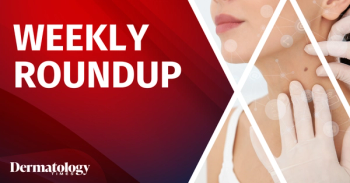
Art Meets Medicine in Bold New AAD Showcase
Key Takeaways
- The art showcase at the AAD Annual Meeting integrates art into dermatology, enhancing understanding of identity, illness, and healing.
- The initiative features diverse submissions from medical students and residents, fostering community and inclusivity within the dermatological field.
Spearheaded by John Zampella, MD, FAAD, and Mitchell Hanson, the project highlights how art can foster community and empathy in dermatology.
In a groundbreaking initiative that bridges science and creativity, John Zampella, MD, FAAD, associate professor of dermatology at NYU School of Medicine, and Mitchell Hanson, an MD/MPH candidate at the Medical College of Georgia, have introduced an innovative art showcase at the American Academy of Dermatology (AAD) Annual Meeting. The program seeks to explore how art can deepen connections within the dermatological community and enhance the understanding of identity, illness, and healing.
The project, with this year’s theme of “Self-Identity, Medicine, and Dermatology,” originated from a simple idea: incorporating artistic expression into the professional landscape of dermatology. Inspired by an AAD initiative called The Art of the Skin, spearheaded by Susan Taylor, MD, the AAD’s current president, Zampella and Hanson saw an opportunity to create something new. “This is the first year it’s ever happened,” Zampella said in a recent interview with Dermatology Times. “I thought, how could we integrate art into some of the stuff that we’re doing?”
Hanson, who is not only a medical student but also an artist and LGBTQ+ advocate, took the idea and ran with it. Drawing on his past experience illustrating posters and even crafting original visuals for a TEDx talk, Hanson designed a submission-based art show inviting medical students and residents to express their identities and experiences through visual media.
The result was a compelling collection of over 20 diverse submissions—including paintings, textiles, mixed media, digital art, and photography. “I was really impressed with the talent that exists in our students and residents,” Zampella reflected. “There was some really high-quality, robust artwork with real thought and real talent.”
Hanson emphasized the inclusive, welcoming tone of the exhibit. “I wanted everyone to feel like they had a space there to talk and be seen,” he said. He noted that showcasing identity in dermatology is particularly powerful, as the skin is such a visible, personal part of the human body. “I wanted to leave it open to interpretation what that meant for medicine and dermatology.”
The impact extended beyond the artistic experience itself. Many students and attendees who might otherwise have felt intimidated by the scale of the AAD conference found a place to connect. “It lets everyone feel more like they are a part of the community,” said Hanson. “They have something to contribute, which I love.”
Clinically, the initiative is supported by research that links art exposure with improved diagnostic and communication skills. “It’s been shown in prior studies, at least with residents, to enhance visual diagnostic skills,” Hanson noted. “It’s also helped with cultural competency… and with students being able to display empathy and check their own biases.”
Zampella highlighted another critical dimension: preventing physician burnout. “Medical training and the practice of medicine beat a lot of the life out of you… People don’t have a lot of time to do hobbies or work on themselves. We want to encourage people here to maintain those other hobbies and skills outside of medicine.”
One particularly poignant piece showcased a sponge wiping away a surface to reveal a vibrant LGBTQ+ pride flag underneath—symbolizing the interplay between skin disease, identity, and visibility. “Instead of removing the dirty skin, it’s like, ‘This is who I am,’” Zampella said. “It hit all the things—what patients feel, how the artist feels, and how skin disease is not something necessarily to be washed away, but part of you.”
Looking ahead, both Zampella and Hanson hope the initiative continues to grow, potentially becoming a formal session at future AAD meetings. “If it stayed the way it is and still existed in 5 years, I’d be thrilled,” said Zampella. Hanson echoed the sentiment, but both expressed an ambition to expand the model across specialties: “I would like to see this on a broader display… I think art could be such a powerful tool to actually help students practice empathy, perspective-taking, and meaning in ways never done before.”
By elevating art in a medical context, this program not only humanizes dermatology but redefines how medicine itself can be practiced—with creativity, vulnerability, and vision.
Newsletter
Like what you’re reading? Subscribe to Dermatology Times for weekly updates on therapies, innovations, and real-world practice tips.


















